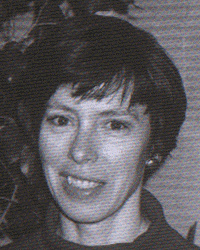Shelley J. Smith
Archaeology

Ever since I was in junior high school, I have been interested in archaeology and the mysteries of the past. It's fascinating to learn how archaeologists decipher the past from sparse clues - broken pottery, abandoned homes, trash middens - and how they employ many of the same strategies as detectives.
In school, I was neutral towards math ; I didn't like it, but I didn't strongly dislike it either ... until high school, when I took geometry , trigonometry , and college algebra. I wasn't good at these subjects, and the C's and B's I received in these classes pulled my grade point av erage down. After that, I avoided taking any more math.
By tenth grade, I already wanted to be an archaeologist , so I took several elective humanities courses and read as much as I c ould about the subject. Archaeology is usually thought of as a social science, and in those days (the early 1970's), statistical analyses weren't widely utilized in the field. I felt very comfo rtable with my career choice, partly because it didn't necessitate taking higher math courses. During my undergraduate ears, I was successful at avoiding higher math, earning a BA in anthropology from Pennsylvania State University in 1975.
But by the time I got to graduate school in 1981, there was no way around statistics and computer science courses. Archaeological field work generates enormous amounts of data. Computer manipulation and statistical analyses of the data are the only means to make sense of it. Severe math anxiety was upon me! I ha d no choice but to nervously plunge in.
Then the most amazing thing happened: I enjoyed statistics and computer science. They were hard work, but my thesis research posed question s that only statistics could answer. For the thesis, I studied the artifacts from 476 Predynastic Egyptian tombs and 85 human figurines, to see if it was possible < /FONT> to learn about gender roles through these material remains. This study otherwise would have taken months to analyze. It felt good to tackle something I hadn't believed I could do . In 1984, I earned an MA in anthropology from Washington State University.
I could have made it much easier on myself if I had built on my high school math foundation with more math and science courses. Instead , I spent considerable time re-learning the math I had once known for m statistics and computer science courses.
Today, I am an archaeologist for the US Department of the Interior Bureau of Land Management , and have also worked for a consultant firm and university contracting divisions. As a Peace Corps volunteer, I worked in four western states and on the Caribbean island of St. Lucia.
Excerpt from the book She Does Math! by Marla Parker
Parker, Marla; She Does Math!; Washington, D.C.; The Mathematical Assiocation of America; 1995